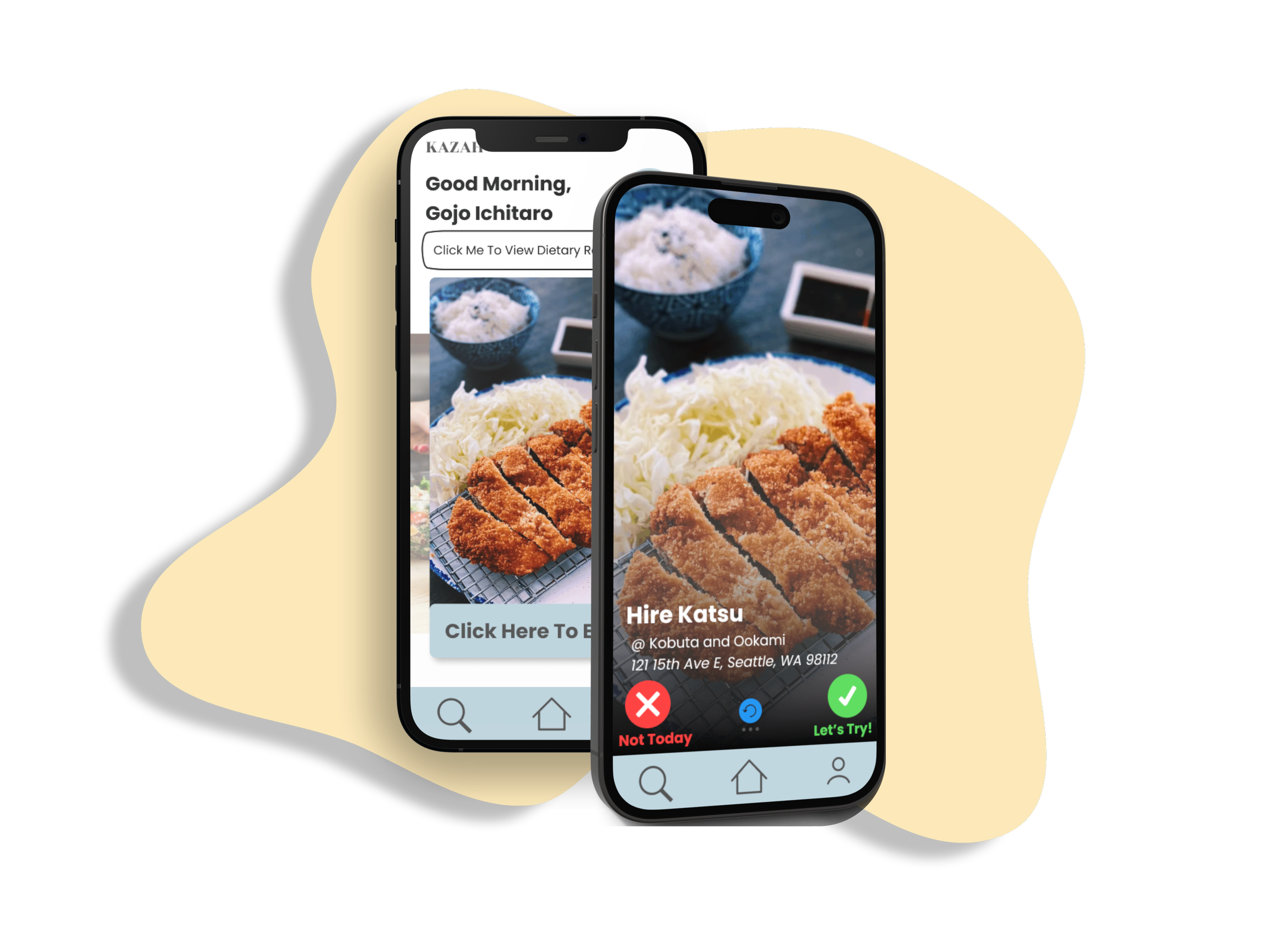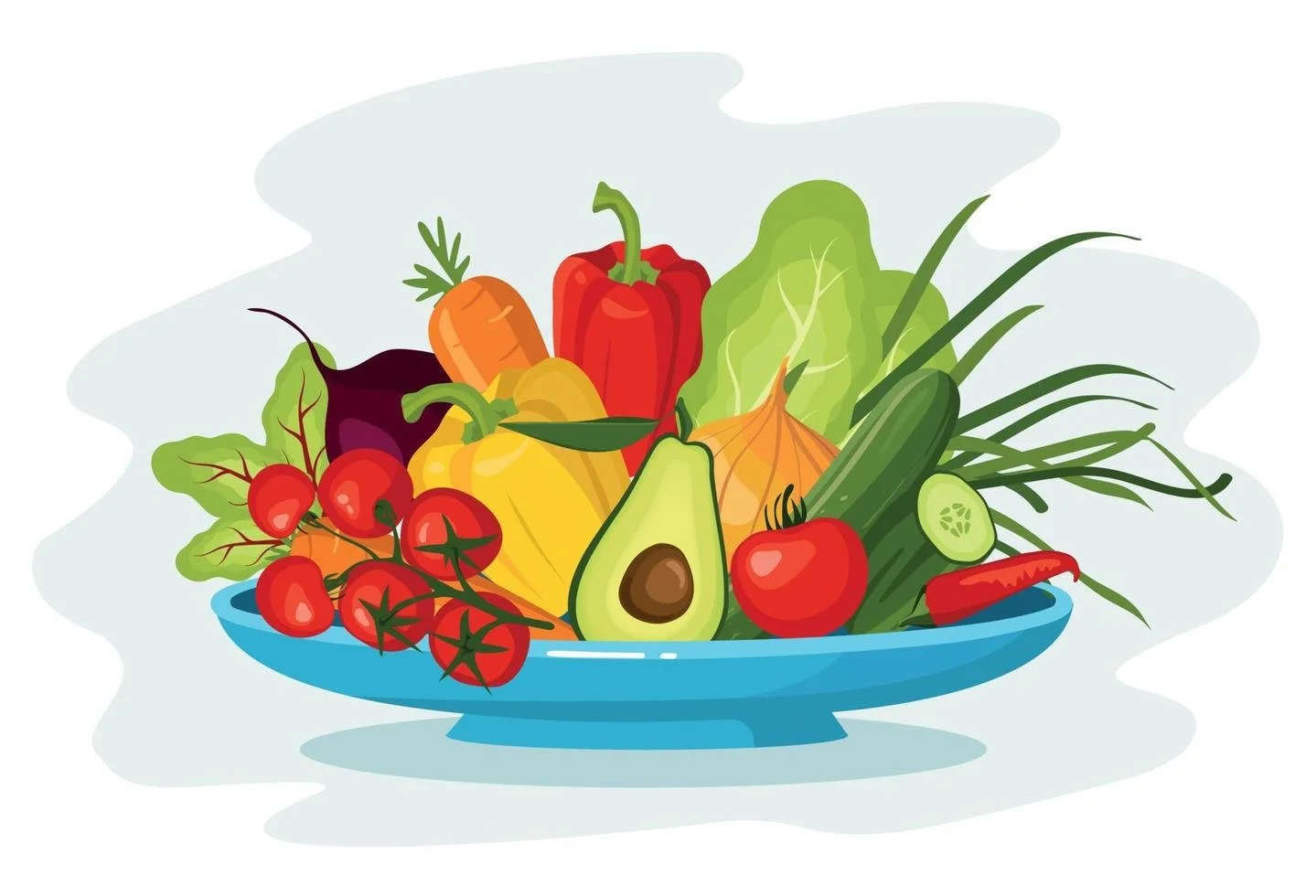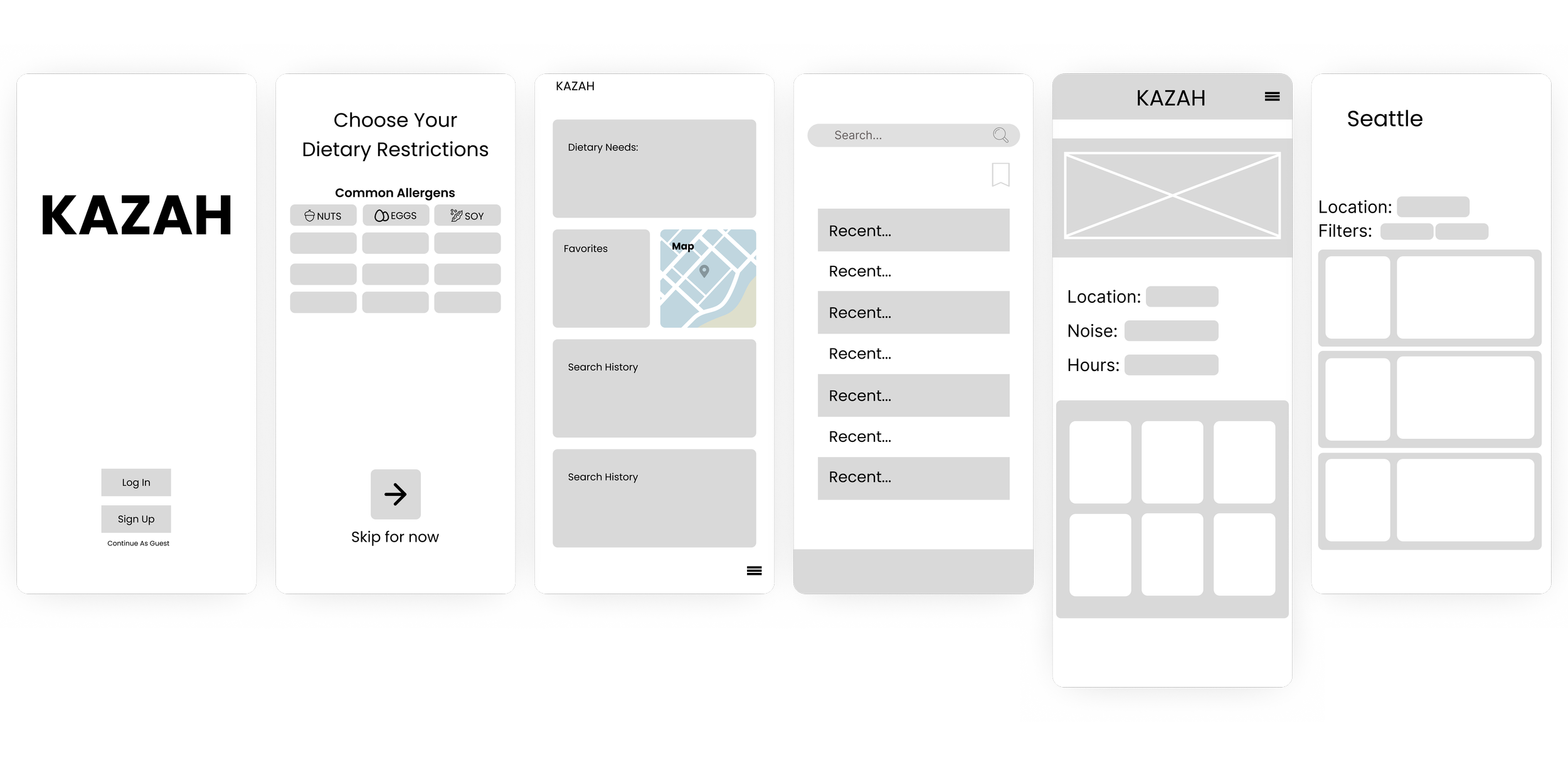KAZAH
A More Fun Way to Eat Out
01
OVERVIEW
ROLE
UX Designer
UX Researcher
TIMELINE
October 2023 - December 2023
Zareen Tasnim (Me)
Abigail Babila
Kazuma Itagaki
Halle Hwang
TEAM
TOOLS
Figma
INFO 360: DESIGN METHODS
Designing for Older Adults
KAZAH is a mobile app designed to help older adults discover new dining experiences through a simple, swipe-based interface inspired by Tinder. Created as part of a design course, our team used Figma to prototype an intuitive and accessible solution that encourages exploration.
The app allows users to browse nearby restaurants, set dietary preferences, and discover diverse cuisines—making dining out more inclusive, engaging, and enjoyable for older adults.
The Problem
Older adults often lack simple and accessible ways to discover new local dining options. Many tend to revisit the same familiar restaurants because current discovery methods—like word of mouth or exploring in person—can be limiting, especially for those who spend more time indoors or aren't active on social media.
Additionally, as people age, they often develop health conditions or dietary restrictions that make eating out more difficult, further narrowing their options. This not only limits their dining experiences but also reduces visibility for local restaurants trying to reach this audience.
On a personal level, each member of our team has experienced dietary restrictions in some form, which motivated us to explore a solution in the food space that prioritizes accessibility, personalization, and joy in dining.
02
DESIGN PROCESS
OUR PROCESS, OUR STEPS
Research
Through various research methods (user research, market research, and literature research), we were able to collect more data and better understand our audience. As none our team members fit this demographic, it was really important for us to spend time researching and doing our best to understand this audience.
Findings
Older adults often prefer cooking at home, especially those with stricter dietary needs, while those with fewer restrictions eat out more.
They face challenges with inactive lifestyles, limited exercise, and difficulty exploring new cuisines due to dietary restrictions.
Existing apps are inconsistent and offer limited usefulness, leading to frustration with evaluating food safety.
Existing apps for finding local stores lack usability, accuracy, and comprehensive dietary support.
About 10% of American adults (~26 million) have food-related sensitivities, highlighting a significant need for better solutions.
PROTOTYPE
Low Fidelity Wireframe
Our low-fidelty wireframe included all of the key features we would have in our solution. The features we wanted to include had the following:
Home Page
Dietary Restriction Selector
Bookmarks
Search Feature
Restaurant Details
Log In Page
User Testing
Through user testing with our target demographic, we gathered valuable feedback that highlighted both the strengths and weaknesses of our initial design. The feedback centered around two key questions:
What makes our app unique?
What are our standout features?
Our early low-fidelity wireframes focused heavily on including all the essential functions needed for the app to work—so much so that the design ended up feeling very similar to Yelp. While users found the features useful, many pointed out that the app lacked a defining element beyond prioritizing dietary restrictions.
This feedback pushed us to rethink our approach and brainstorm ways to differentiate KAZAH from existing platforms. That’s when our key innovation was born: integrating a swipe-based interface—similar to Tinder—to help users quickly and intuitively say “yes” or “no” to nearby dining options. This simple yet engaging interaction added a playful and modern twist to the dining discovery experience, especially for older adults.
Hi-Fi
Final Prototype
While retaining the app’s core features, we dedicated more time to refining and enhancing the overall design. Through multiple iterations, KAZAH evolved into a product with its own distinct personality and a user experience tailored specifically to the needs of our target audience.
PRESENTATION
03
REFLECTION
WHAT DID I LEARN?
My First Design Journey Experience
This project taught me the value of following a strong, structured design process. By documenting every step—from brainstorming and user research to testing, creating personas, and storyboarding—we were able to design KAZAH as a solution that filled a gap in the market.
One key takeaway was the importance of market research early on. Understanding what already exists helped us identify opportunities for innovation. During the refinement phase, user testing revealed insights and perspectives I hadn’t considered on my own, showing me just how essential it is to design with, not just for, the user.




